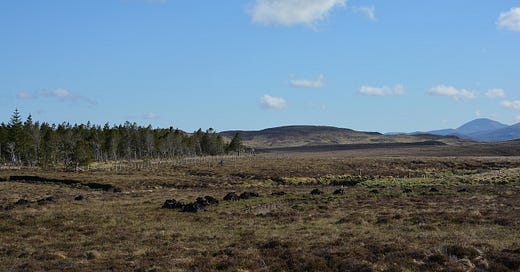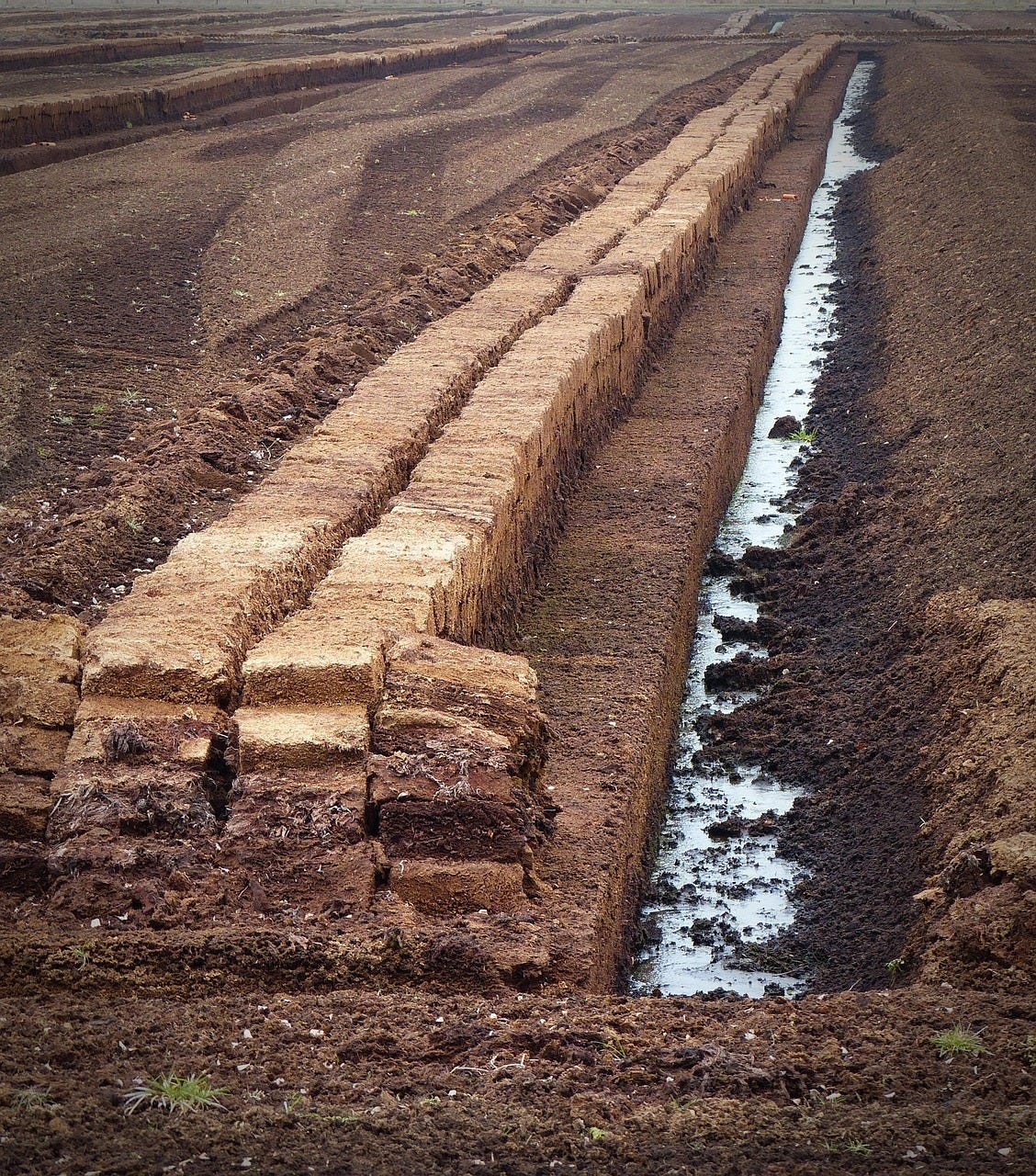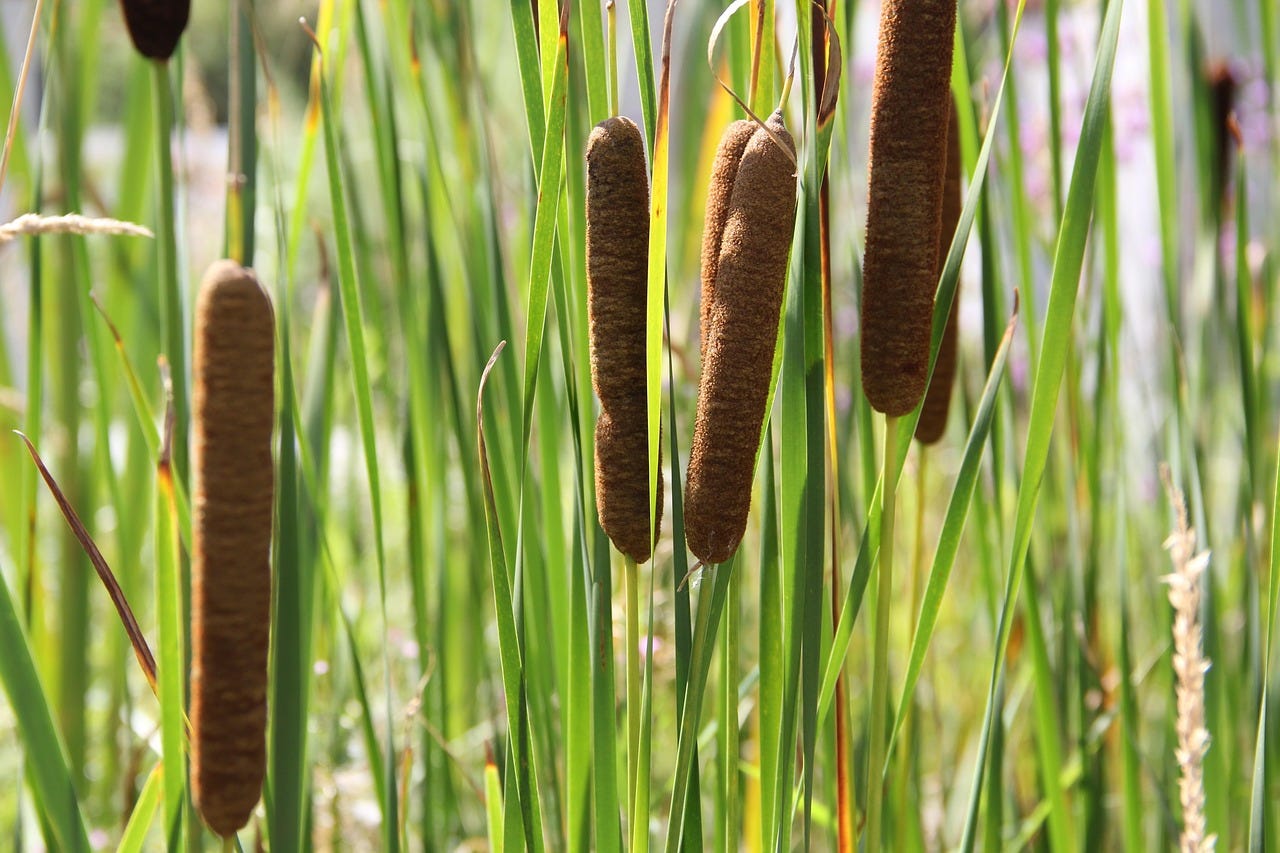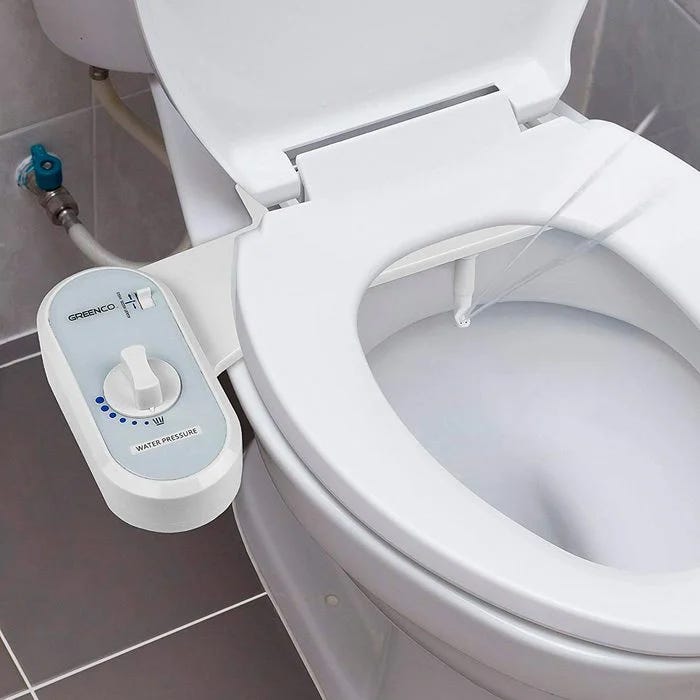The answer is in the title but the question could be ‘what locks up the most carbon, forest or peatlands?’ Globally terrestrial wetlands store 600 billion tons of carbon and cover a modest 3% of the Earth’s surface, forests cover 31% and store less carbon.
Marketing peatlands is significantly harder than doing the same for forests. Re-wetting areas to bring back destroyed peatland is technically harder than replanting a forest. Few people around the world seem especially motivated to protect them. About 15% of peatlands have been drained for agriculture, which releases vast quantities of carbon. Around 5%–10% of the world’s peatlands are degraded in some way, for example, they have been stripped of their natural of their native vegetation. In the tropics, it has been estimated that more than 40% of peatlands have been degraded. Altogether this releases between 1.5 and 2.5 billion tons of greenhouse gas emissions per year.
Low hanging fruit
You’ve heard this before, methane is a more potent greenhouse gas than carbon dioxide but has a much shorter residence time in the atmosphere. It has been pointed out, a lot, that while we should continue efforts to reduce CO2 we should put much more focus on reducing methane emissions. This is a more strategic approach. At least 20% of methane comes from landfilled waste and sewage treatment. In a circular economy we would have far less waste, as for sewage I wrote about what we can do in this article:-
Another of those low-hanging fruits is protecting and restoring peatland. They stock vastly more CO2 per hectare than a forest does and for longer. Despite this they are much less protected by people and by governments. Which is about par for the course, governments are generally reactive and not sufficiently proactive. It goes with the territory, any given government is in place for a limited number of years so they tend to be myopic when it comes to seeing across decades. This is in stark contrast to big business who have multi-decennial plans, unfortunately these plans are profit/threat orientated. Local people, with low incomes, are not incentivised to preserve and maintain peatlands. Exploit today, regret tomorrow is a recurring theme. Industry led consumer demand has, over centuries, forced local people to abandon traditional farming practices and adopt ‘exotic’ crops for exportation. These don’t grow well in a number of different situations so draining marches and peatlands to produce export crops became standard practice.
Palm oil is a case in point, over 2022/23, consumption was around 78 million metric tons worldwide. Research has shown that, by 2015, in Peninsular Malaysia, Sumatra, and Borneo 4.3 million hectares (27 per cent) of peatlands had been converted to industrial plantations. 73% of this area has been put to palm oil plantations, the rest is for wood pulp.
Paludiculture
Yes, it’s a thing. According to the EU's Common Agricultural Policy, it is the productive land use of wet and rewetted peatlands that preserves the peat soil and thereby minimizes CO2 emissions and subsidence. Native crops, biomass, trees and tree crops, fishing and hunting are activities that can be sustainably continued on peatlands.
Typha australis.
The USA Forestry Service estimates that North Americans use 37 rolls of toilet paper per person per year. That’s 0.7 rolls per week, per person. There’s big money in it, in 2023, the global toilet paper market generated a revenue of US$107.38 billion. The WWF calculate that, for the USA market alone, 27,000 trees are felled each day to satisfy the demand. That’s a lot of trees we’re flushing down the toilet.
As so-called ‘Western culture’ spreads around the globe demand for toilet paper increases. In many cultures people washed themselves, the arrival of toilet paper in local shops encourages, initially, a hybrid of wash and then wipe. Eventually this gives way to just wiping. The latter is associated with physical damage to the wiped area and is less hygienic.
So on to Bulrush/Cattail. These plants grow naturally in peatlands and are often used as part of the re-wetting process to rebuild destroyed peatland areas. They can be transformed into paper and that paper could be made into toilet paper. It’ll be naturally coloured because it’s difficult to bleach Bulrush paper, as we don’t want bleach around this is another advantage. Even better would be to produce reusable sanitary cloths using Bulrush fibre, put bidets back into houses and move to washing/wiping.
If you don’t have enough room for a bidet there are plenty of easily installed water jet systems.
Yes, I hear the point that moving to washing will increase water demand. This is the great thing about using Permaculture design to connect stuff together. The sewage flows out to a reedbed blackwater treatment system that is planted with Typha which are harvested for fibres and the treated water is cycled back to the houses.
I designed and built a similar system a few years ago that used Stinging nettles (Urtica dioica), not Typha. Nettles → greywater treatment → mature nettles → to a retting pit (the fleshy part decomposes and leaves the fibres) → fibres for clothing plus enriched water from the retting pit used to irrigate/fertilise crops.
Peatlands and marshlands must be protected, preserved and re-established. Designing re-wetted peatlands to be productive using Paludiculture techniques is a win-win for us and the global climate. Peatlands are also ecologically very diverse so preserving them and re-establishing them helps with the fight against the global collapse in biodiversity that we are witnessing. We can wait for governments to better protect peatlands or we can work locally with our farmer neighbours and help them re-wet destroyed peatlands and adopt Paludiculture on these areas.











Hello, I enjoy your writing but I think you've divided your numbers the wrong way round. 37 rolls of toilet paper per person per year is 0.7 a week, not 1.5 a week.
I did my first permaculture design course with you in France many many moons ago, and I remember it well. Best wishes!